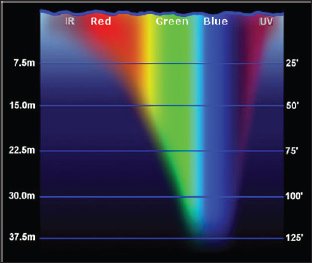Lupine Publishers| Journal of Oceanography
Editorial
Image processing can be defined as performing any process on the
visual data or vision signals such as a stored digital image, a photo
from a scene or a video frame [1]. The output of an image processor
might be another image or a set of special signals and sometimes some
variables related to that image. Most of image processing techniques
consider an image as a 2-D signal and then do a suitable signal
processing on it. Nowadays, image processing is one of the best tools
for feature extraction in natural studies like environmental
interactions and behavior analysis. In human visual system, a similar
process is done by our brain which finally helps.com to better decision
making, however, the main aim of image processing is not implementation
of intellectual functions of human in terms of received data from our
eye (as an optical bio-sensor) related to various observations, because
these functional activities are so complex. In fact, pre-processing and
some specific processing steps in order to data mining, pattern
recognition and knowledge extraction are key approaches of image
processing in analysis of nature. An image usually follows the following
steps after creation by imaging sensor:
a) Digitalization including sampling and quantization after reception
from imaging block (camera and so on), this process is required to
give.com the ability for processing and storage.
b) Pre-processing, this step contains some corrections and image
enhancements in order to do main processing (e.g., noise reduction,
image alignment, histogram equalization).
c) Classification (supervised or unsupervised), it is done for recognizing patterns.
d) Data Analysis, which is related to a practical, natural or industrial application.
Based on the recent advances in developing optical devices for
underwater imaging and also image processing tools, detection, tracking
and recognition of underwater objects and targets are possible and
underwater optical image processing has become a hot topic of research.
In addition, some real systems for practical aspects in undersea/ocean
monitoring [2,3] have been made. Thus, we want to emphasize on this
research field as a critical and interesting area and encourage relevant
researches to have attention to these new findings. In order to have
some detailed information about underwater optical imaging and image
processing, we should firstly know the behavior of sunlight in undersea
environment. Its wavelength includes a range from 400 to 700 nm. Since
the light is an electromagnetic wave, it has a limited propagation range
in water and so it is damped soon. Figure 1 shows that the range of
propagation before a full damp is depended on the frequency of light
components (from red to blue in the spectrum of white light) such that
the blue wavelength has the highest range and the red has the lowest.
Such restrictions are factors that make images low quality in which they
are needed to image processing (images taken by underwater optical
sensors), so their quality is highly related to the depth of imaging.
Another similar area is sonar image processing which is done on the
images taken by a type of acoustic imaging sensors.
Figure 1: The range for different components of white light.



No comments:
Post a Comment